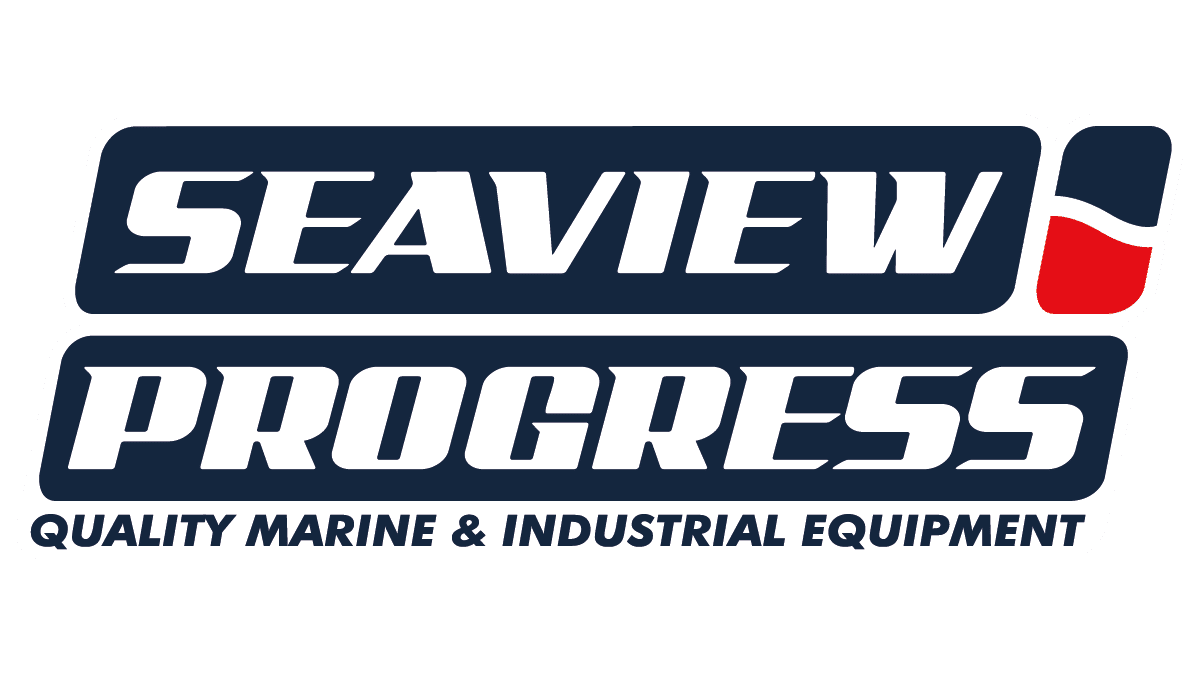
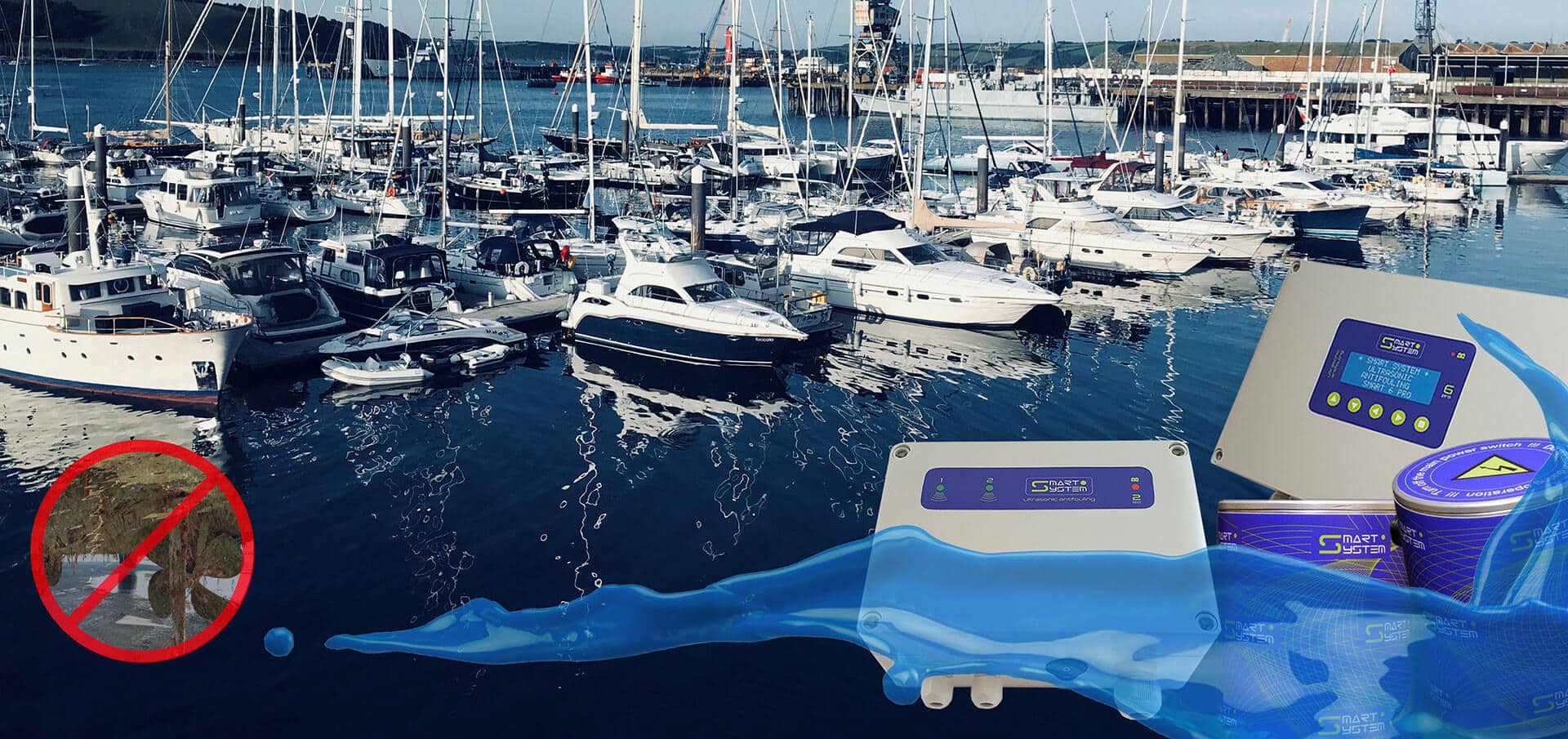
The Future of Antifouling, Now !
The eco-friendly antifouling solution the marine industry has been waiting for
SMART SYSTEM ANTIFOULING

| Smart 2 Lite | Smart 6 PRO | |
|---|---|---|
| Number of transducers | 2 | 6 |
| DC supply | 12/24V | 12/24V |
| AC supply | 110/240V external | 110/240V external |
| Board cooling | ✓ | ✓ |
| LCD display | x | On board |
| Transducer power | 60W | 60W |
| Transducer band | 2 resonate bands 25/45kHz | 2 resonate bands 25/45kHz |
| Frequency range | 20-55kHz | 20-55kHz |
| Transducer mode operation | one by one or both | All at once - max efficiency over hull, sequential, random |
| Transducer power adjust | 4 steps DIP switch | 10 steps on LCD |
| Transducer burst time | 2 steps DIP switch | Adjustable 200ms - 900ms |
| Transducer pause time between burst | 2 steps DIP switch | Adjustable 200ms - 400ms |
| Average consumption per transducer | x | On board |
| Average consumption per transducer | 250mA - 1,3A | 350mA - 1,5A |
| Output transducer voltage | 300V (1000Vpp) | 300V (1200Vpp) |
| Programable Timer mode | x | ✓ |
| Programable night mode min power | x | ✓ |
| Low voltage protection | ✓ | ✓ |
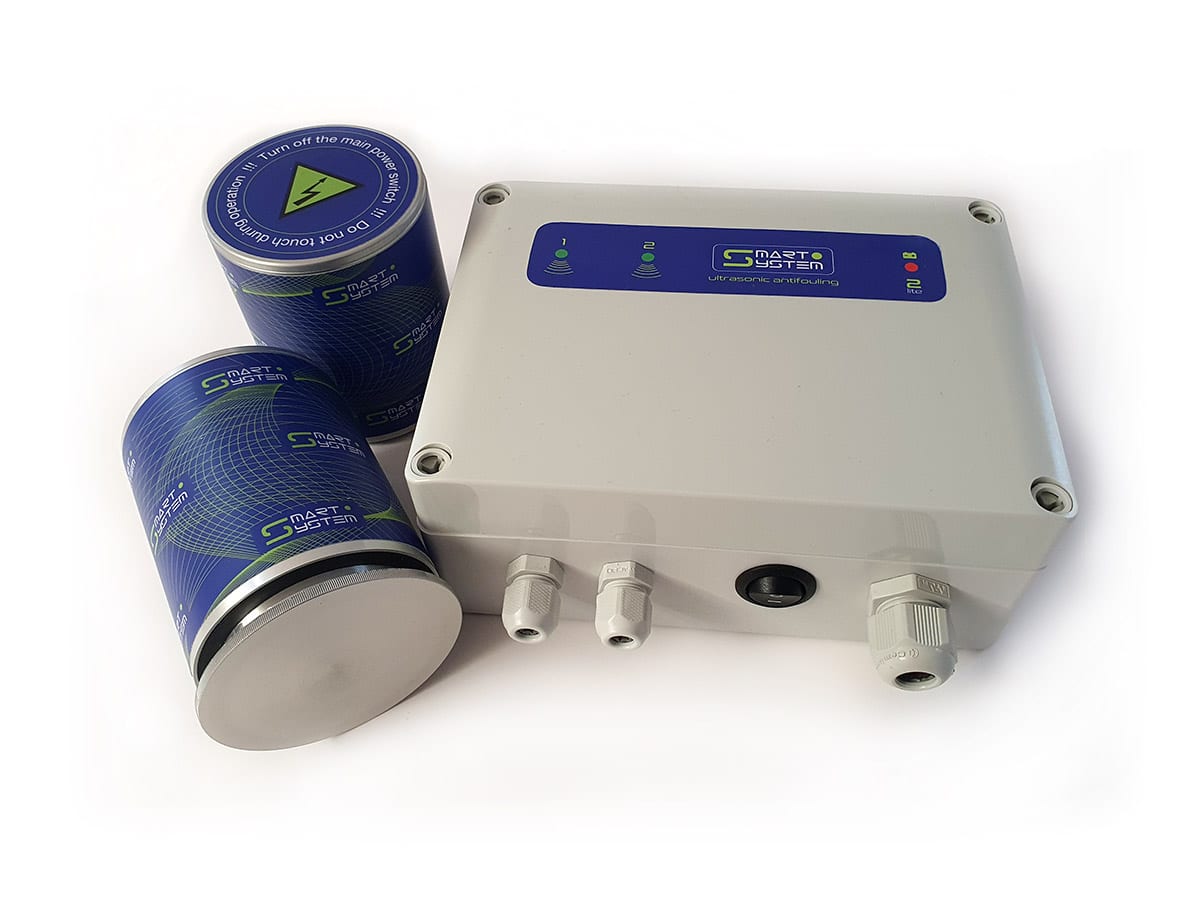
Smart LITE 2 - For yachts up to 30 feet
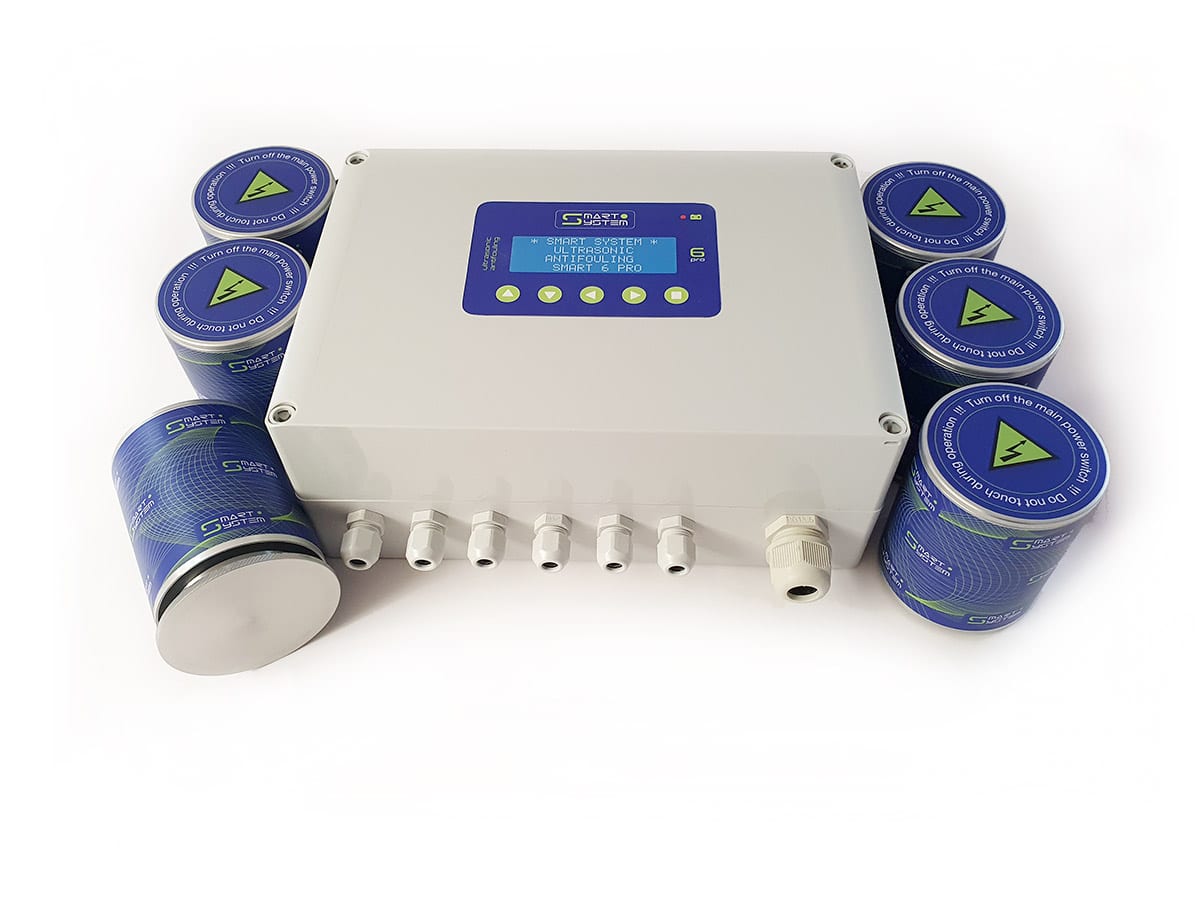
Smart PRO 6 - For yachts up to 60 feet
-
dayhoursminsec0
- 0
- 0
- 0
The effectiveness of this ultrasonic antifouling system is noteworthy. It operates by emitting multiple frequencies of ultrasonic sound waves in rapid bursts. These sound waves create a dynamic environment of alternating high and low pressure. The low pressure generates microscopic bubbles, while the high pressure causes these bubbles to collapse, a phenomenon known as cavitation. This process not only prevents micro fouling but also inhibits the growth of larger organisms like barnacles.
This new antifouling approach leverages the cavitation effect to disrupt the cells of microorganisms, thereby preventing them from attaching to the boat's underwater parts like the hull, rudder, and propeller. By doing so, it also curtails the growth of algae and seashells, which are often attracted to these areas. An added benefit of this technology is its environmental friendliness.
Ultrasonic technology, commonly used in industries and medicine for cleaning, is the foundation of this device. It converts electrical energy into mechanical energy via a transducer. This transducer emits ultrasonic vibrations that resonate through the boat's hull, effectively preventing biofilm formation. Moreover, this electronic barnacle protection system is safe for dogs, making it an excellent choice for pet-friendly boating.
For effective distribution:
- Install one transducer per 10m² at the bow.
- Install one transducer per 5m² at the stern, focusing on areas near rudders, propellers, and flaps.
Example configurations:
- For a 36Ft motor yacht with 1 or 2 engines, use 2 LITE2 sets with 4 transducers.
- For a 50Ft motor yacht with 1 or 2 engines, use a PRO6 set with 6 transducers.
- For a 45Ft sailboat, use 2 LITE2 sets with 4 transducers.
- For a 28Ft motor boat with an outboard engine, use a LITE2 set with 2 transducers, placing one at the bow and one at the stern.
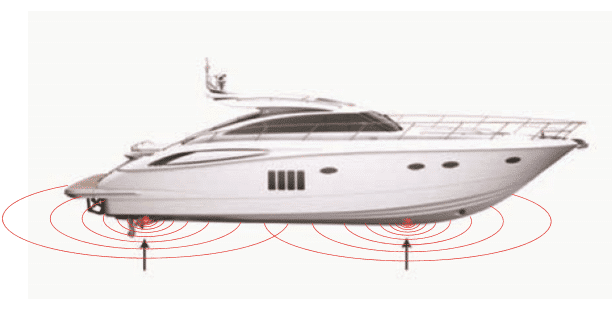
Motor Yacht Position up to 30ft
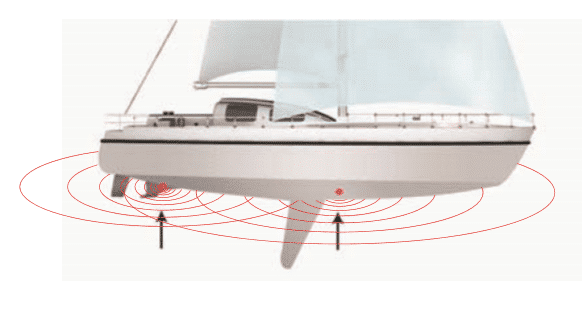
Sailing Boat Position up to 30ft

Motor Yacht up to 60 feet
Smart antifouling refers to the use of advanced technologies and materials to prevent the accumulation of marine organisms like algae, barnacles, and mussels on submerged surfaces of ships, boats, and maritime structures.
These systems are designed to be more efficient, environmentally friendly, and cost-effective compared to traditional antifouling methods.
Traditional antifouling methods often involve the use of harmful chemicals that can leach into the ocean, causing damage to marine life.
Smart antifouling systems, on the other hand, use less toxic or non-toxic materials, and some even employ physical methods or natural compounds to deter organisms. This reduces the ecological footprint of maritime operations and contributes to preserving marine ecosystems.
"Cavitation" is the rapid formation and collapse of millions of tiny bubbles (or cavities) in a liquid. Cavitation is produced by the alternating high and low pressure waves generated by high frequency (ultrasonic) sound. During the low pressure phase, these bubbles grow from a microscopic size until, during the high pressure phase, they are compressed and implode.
Tests show that there is no danger to fish or marine mammals, (but if they can hear the ultra high frequencies and don't like it, they only have to swim a few more inches away from the hull to avoid the problem!)
Painting the hull is not only for purpose of antifouling, it is also an important waterproofing barrier, protecting the gel coat from the effects (and immense cost) of osmosis. Therefore we would still recommend that the boat is protected under the water line. In some cases to maximize performance some yacht owners who have installed the Smart System have opted to use a harder grade of antifouling paint, as apposed to the soft self polishing versions which have a higher drag factor through the water. So although there is still a need for painting below the water line, when using the Smart System the need to do so will be greatly reduced.
Smart antifouling is used in various sectors of the maritime industry. Its primary applications include commercial shipping, where it helps maintain ship hulls for efficient fuel usage; leisure boating, to keep boats' performance and appearance; and on offshore structures like oil rigs and wind farms, to prevent biofouling that can lead to corrosion and operational inefficiencies.
The main challenges include the development of materials and systems that are both effective and environmentally friendly. There's also a need for solutions that are cost-effective and easy to apply or maintain. Technological barriers, such as creating systems that can withstand various marine conditions and ensuring long-term durability, are also significant challenges.
The future of smart antifouling technology looks promising, with ongoing research focusing on innovative materials and methods. These include nanotechnology-based coatings, biologically inspired solutions, and environmentally friendly chemical compounds. The goal is to develop systems that are not only more effective but also more sustainable, potentially transforming the way we maintain and operate maritime vessels and structures.
Fill out the recommendation form below so that one of our experts can contact you.
* Required fields.
